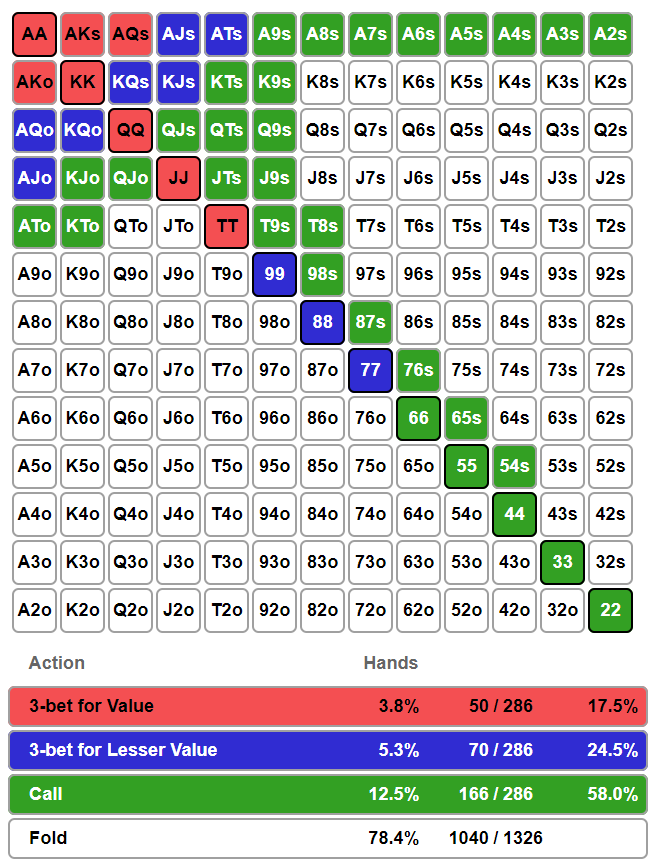







A Frequent Mistake I Saw at the WSOPby Jonathan Little | Published: Apr 09, '18 |
 The WSOP is right around the corner, so in this blog post, I am going to share with you the most frequent mistake I saw amateur players commit on a regular basis during the last WSOP. Most of these players don’t even realize they are committing this egregious error. This mistake is difficult to notice, especially for players in the small or middle stakes, because the vast majority of the player pool exhibits this flaw. Once the amateurs become aware of it, they will instantly be able to improve their strategies, allowing them to play in a much more profitable manner.
The WSOP is right around the corner, so in this blog post, I am going to share with you the most frequent mistake I saw amateur players commit on a regular basis during the last WSOP. Most of these players don’t even realize they are committing this egregious error. This mistake is difficult to notice, especially for players in the small or middle stakes, because the vast majority of the player pool exhibits this flaw. Once the amateurs become aware of it, they will instantly be able to improve their strategies, allowing them to play in a much more profitable manner.
Most amateurs simply do not apply enough pressure before the flop. Their strategy is to wait for strong hands and then 3-bet (reraise), hoping their opponents will blindly pay them off with all sorts of junk. This results in their opponents easily folding to the passive amateur’s aggression, making it nearly impossible for the amateur to extract significant value from their strong hands. If you only win small pots with your premium hands, you will have a difficult time winning in the long run.
Instead of 3-betting with only premium hands, you should 3-bet with a wider range determined by how you expect your opponents (especially the initial raiser) to react. If you expect your opponent to call your 3-bet with a wide range of marginal hands such as 2-2, A-T, and K-9, you should 3-bet with what is referred to as a linear range. This range consists of your best hands, such as A-A and A-K, as well as hands that should have your opponent dominated, such as 9-9, A-J, and K-Q. You will find this strategy works best against weak players who are not capable of folding to a 3-bet before the flop once they have any amount of money invested. Going to the flop against players who are frequently dominated will work amazingly well for you.

If you expect your opponent to either fold or 4-bet (rereraise) when you 3-bet, you should 3-bet with what is referred to as a polarized range. This range consists of your best hand, such as A-A and A-K, and hands that are not quite good enough to call your opponent’s initial raise, such as Ad-4d, Kd-Ts, Th-8h, and 5d-4d. Notice that when implementing this strategy, you will be calling with your hands that flop decently well, such as A-J, K-Q, and 8s-7s. This strategy works well because when you 3-bet with a weak hand, you rarely expect to see a flop. With hands like A-J and K-Q, you typically want to see a flop, and calling ensures that happens most of the time.

While 3-betting with marginal hands is an excellent way to make you more difficult to play against, against certain opponents, you should only 3-bet with your premium hands. If you expect your opponent to only raise with a premium hand before the flop, which is a trait some small stakes players exhibit, there is no point in bluffing because your bluff is almost certain to fail. This will usually be the case when the initial raiser is in early position or known to be overly tight. Against these players, it is important that you do not overvalue hands like T-T and A-Q because if you 3-bet and your opponent does not fold, you are often in bad shape. Your goal with your strong hands should not be to play them in a manner that forces you to fold. Instead, call the initial raise and see what develops after the flop. Against the tightest players, your 3-betting range could be as tight as A-A, K-K, Q-Q, and A-Ks.
If getting out of line and 3-betting with non-premium hands feels too risky for you, you must understand and accept that if you want to succeed at poker, you have to steal pots that don’t belong to you, especially once you move to the middle and high stakes. If you sit around and hope for someone to dump their chips to you, you will frequently be disappointed and end up blinding off. Instead, take control of your destiny and don’t rely on playing only the best starting hands in a straightforward manner.
Thanks for taking the time to read this blog post. If you enjoyed it, you will love my training site PokerCoaching.com. Check it out and sign up for your free 7-day trial. Let me know what you think!